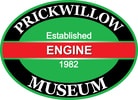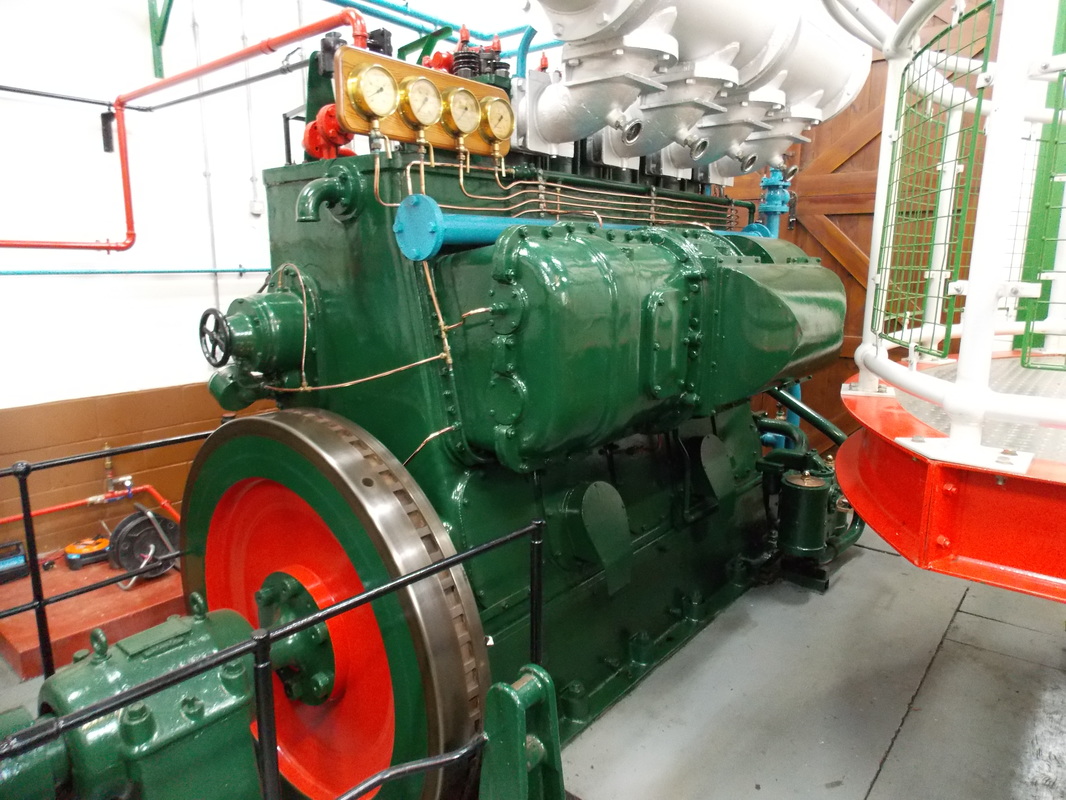Pressure charging
|
Internal combustion engines burn a mixture of fuel and air. Engines which suck in the air-component of that mixture solely through the action of the vacuum produced by the motion of the piston are described as ‘normally-aspirated’.
In order to force more of the combustible mixture into the cylinder than can be achieved by vacuum alone (and thus produce greater power output) many engines are pressure charged (also known as ‘turbo-charged’). On small engines (such as in modern cars) the turbocharger which produces the pressure is usually driven by the expansion of exhaust gases expelled from the engine. |
On larger engines, as employed in ships, locomotives and stationary applications, the ‘blower’ (as it is often known) is gear-driven from the engine crankshaft.
Our collection includes one such engine, the W H Allen T47 which is pressure-charged by a ‘roots’ type of blower. A ‘blower’ is not the same as a turbine compressor. A compressor produces pressure within the body containing the turbine rotors and emits compressed air, whereas the rotors of a ‘blower’ simply push through high volumes of air and (low) pressure is subsequently produced by constriction of the airflow on the output side of the blower. The Mirrlees engine is not pressure charged but blast-injected by high pressure compressed air. Back to Engineering |


